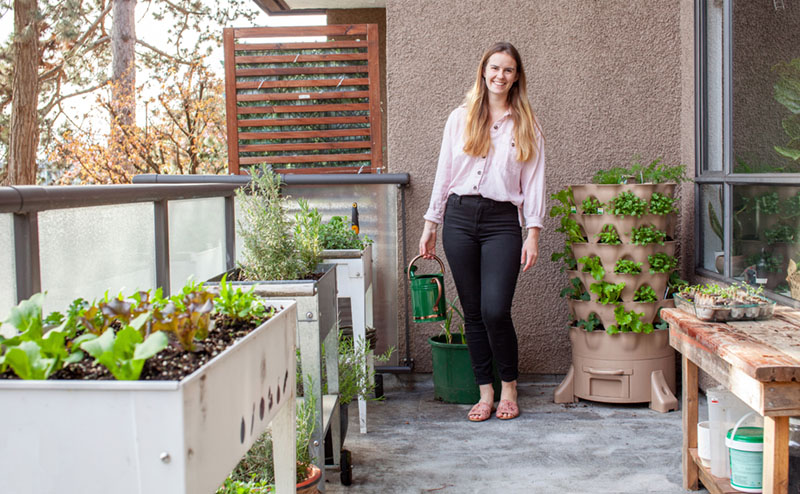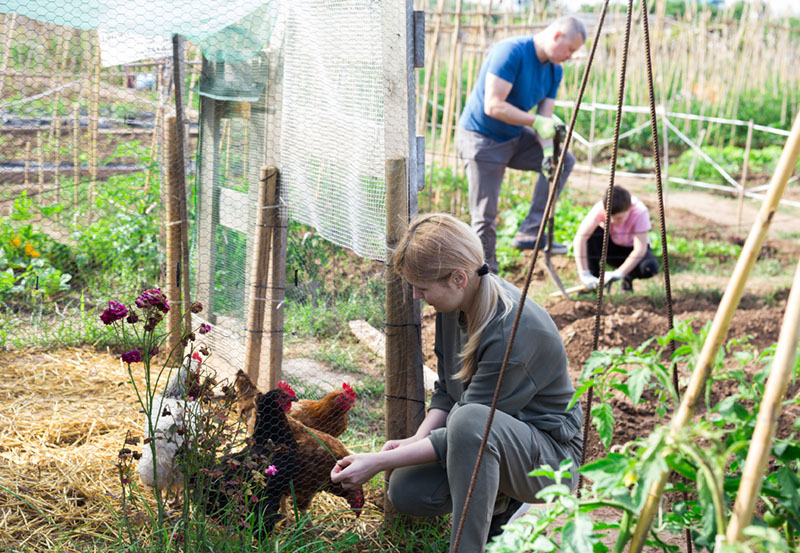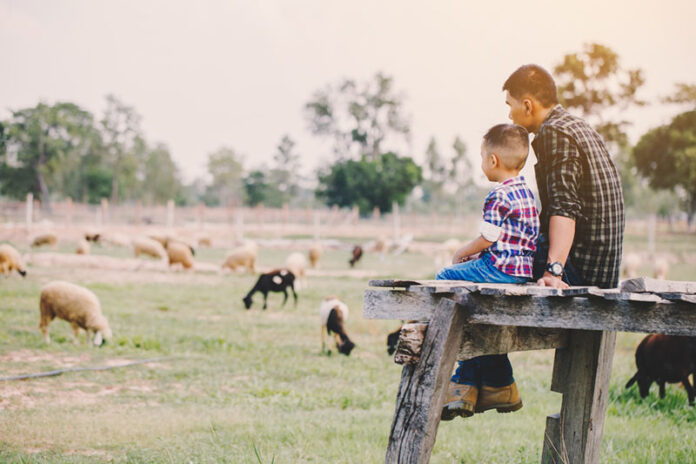According to Merriam-Webster, homesteading is “to acquire or occupy as a homestead (the home and adjoining land occupied by a family).” This doesn’t even begin to give credit to the movement and what it’s meant to thousands of people around the globe.
Given recent events and global challenges to health, food security, and economic stability, more people have been interested in homesteading and self-sufficient ways of living. Curiosity about alternative ways of life has certainly grown in recent years—and for good reason! Homesteading is re-introducing old skills, providing people with tasty foods, and epitomizing what “sustainable living” really is.
So, what is homesteading, and how can we apply some aspects to our lives even when we’re lacking an actual homestead? In this article, we’ll take a look at exactly what homesteading is and how each of us can learn from the movement.
Homesteading, a History
For those of us dreaming about starting a homestead of our own, the origins of homesteading may come as a shock. In 1862, the Homestead Act was signed into law by President Abraham Lincoln. It was designed to provide support for Western migration and provided a way for people to access 160 acres of public land by working it for five years before being given ownership.
The Homestead Act was designed “to elevate the condition of men, to lift artificial burdens from all shoulders and to give everyone an unfettered start and a fair chance in the race of life” (History Channel). While this law is no longer in effect, many modern-day homesteaders enjoy the same benefits of homesteading that our ancestors did.
The first homesteaders lived on a piece of land, farmed it, built a house and made improvements. Today, homesteading takes all of that to the next level.
What is Homesteading?
Let’s look at another definition. According to Wikipedia, “Homesteading is a lifestyle of self-sufficiency. It is characterized by subsistence agriculture, home preservation of food, and may also involve the small scale production of textiles, clothing, and craftwork for household use or sale.”
As it can be practiced anywhere—from a massive farm to a tiny apartment—homesteading means different things to different people. However, there are some common themes.
Self-Sufficiency
In the broadest sense of the word, “homesteading” means a commitment to a self-sufficient way of life. This could look like a few different things: one’s ability to grow and produce the majority of their food; a home powered by solar, hydro, or wind electricity (AKA off-the-grid); or skills that allow someone to produce or repair some of their own goods (like clothing and other textiles).
As a spectrum, the “average” homesteader may fall anywhere on this scale. They may be totally off-grid and self-sustaining to the point that they don’t purchase anything, or they could be somewhat self-reliant but still work a conventional job and purchase any unmet needs—or anywhere in between.
We could all learn a thing or two from the self-sufficiency of our favorite homesteaders. Even as city-dwellers, we can still learn to take care of some of our own needs. Let’s face it, we’re dependent on outside sources for nearly all of our needs, and cutting back on just a few of them can help develop new skills, eat healthier, form healthier connections with each other and our environment, and save money.
Tasty Food
Food is a big theme in the world of homesteading. For most homesteaders, growing and producing one’s own food is one of the most important aspects of self-sufficiency (we all have to eat, right?!).
This could look like a large family living together, growing a range of vegetables, herbs, fruits, and nuts and raising animals that supply them with eggs, milk, and meat. They may sell these products, or they could just be for their own consumption.
Don’t live on 100+ acres? Have a roommate/landlord that wouldn’t be happy if you started raising chickens? Don’t worry, you can still bring this aspect of homesteading to your home (wherever that may be).
- Food can be grown anywhere. Use a windowsill to grow herbs, get a small hydroponics kit for lettuce and other greens, you can even grow sprouts from a jar!
- If you have a larger space, try a small raised garden or plant some kitchen herbs on your porch or balcony.


- If you live in an even larger space (and don’t have laws that prohibit it), raise a few chickens for eggs, establish a beehive, or raise some small ducks, rabbits, or quail.
- If you don’t have space to grow food, you can still preserve/produce some of your own food—just like a homesteader! Try your hand at baking bread, make preserves or jams, or produce your own sauces, salsas, pickles, or chutneys with seasonal produce.
- Even in the biggest, most populated cities, foraging for food is an option. Wild plants and mushrooms grow in the least-expected of places. For safety reasons, be sure you have a guide (or book) and avoid areas that may be polluted.
Work Ethic
One of the biggest benefits (and challenges) to a homesteading way of life is the work ethic it requires. For some homesteaders, very few needs are met outside of the home. This means that rain or shine, these folks are usually up at the crack of dawn to milk cows or check for eggs or chase pests away from the vegetable garden.
Becoming self-sufficient means shying away from many of the modern conveniences most of us have grown accustomed to. It means adopting a “do-it-yourself mentality.”
This could mean:
- Not buying new appliances, and repairing old ones instead.
- Cutting your own hair instead of going to the salon.
- Walking or riding a bike instead of driving.
- Learning how to mend clothes (or make them).
- Cooking all of your own food instead of dining out.
- Making repairs around the house instead of hiring someone.
- Homeschooling your children.
- And much, much more. Get creative!
Knowledge and Skills
As you could assume from the last point, homesteading ultimately means learning a lot of skills and drawing upon the knowledge of earlier generations. Growing food and providing for oneself were things our ancestors did without even recognizing it.
In recent years, we’ve lost a lot of this knowledge as it became quicker, easier, and sometimes more affordable to simply have someone take care of our needs for us.
Homesteading means learning some of these skills again. Fortunately, in an age of YouTube, blogs, and Instagram, obtaining new knowledge has never been easier.
Alternative Energy
For many homesteaders, self-reliance also means not relying on traditional electricity, gas, and water utilities. It means using natural resources like the sun, rain, and wood for heat instead.
Again, it’s important to look at this as a spectrum. Most people aren’t even able to transition to having their electricity powered by renewable energy, let alone be completely off the grid.
However, there are small changes we could all implement:
- Capture rainwater and use it to water the garden (or lawn).
- Save water while showering (collect in a bucket) and use it for the garden.
- Invest in a small solar system to charge smaller electronics like your cell phone, laptops, or tablets.
- Invest in a wood burning stove and use it for heat and cooking.
- If you’re able to, invest in an electric or hybrid car. Or a new bicycle!
Financial Freedom
Some people homestead out of necessity, while others are more driven by a goal to connect with the earth and live a sustainable lifestyle. Regardless of the reason, many homesteaders benefit from a reduction in expenses.
In fact, there are countless homesteaders who have been able to get out of debt or find financial freedom by reducing their reliance on goods and services and even making money from excess produce or products made at home (i.e. food, clothes, crafts, etc.).


Are you a homesteader (or aspiring to be)? If so, feel free to share any thoughts or tips in the comments!
And lastly, if you’re excited about getting into homesteading yourself, be sure to also check out the 10 Best Homesteading Blogs here!














